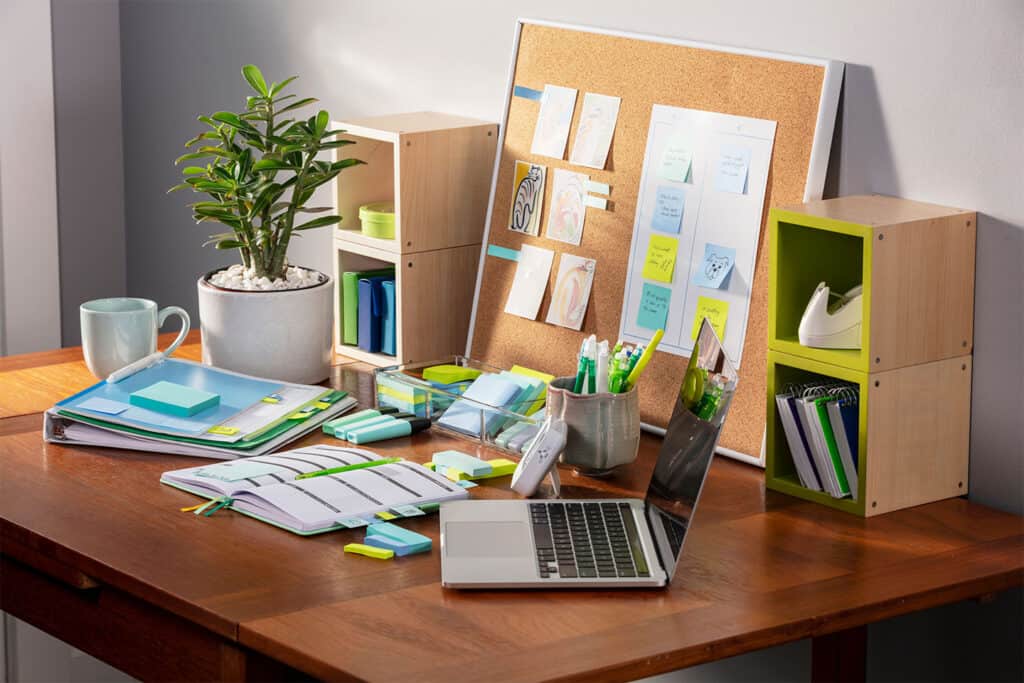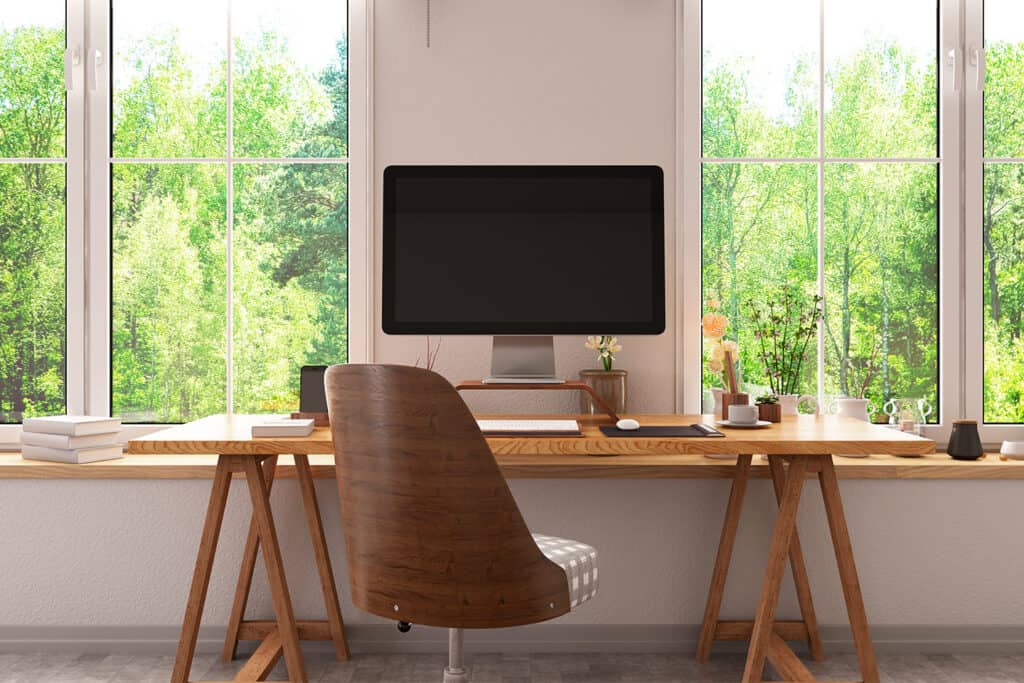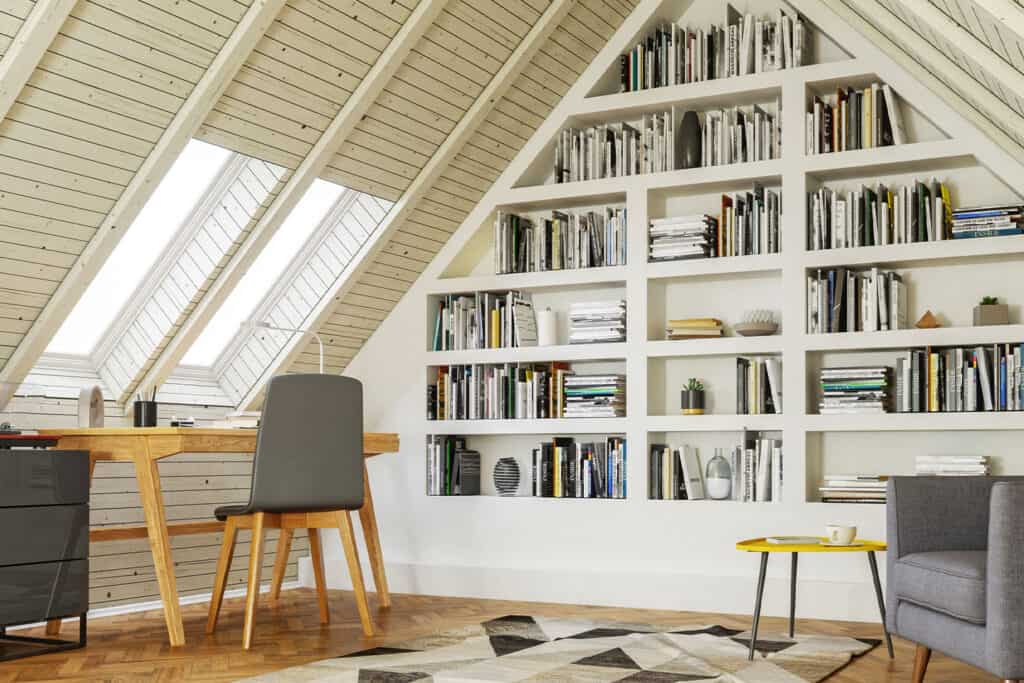
In recent years, the concept of working from home has become a widespread norm – particularly here in the Chattanooga area, where our high-speed fiber internet has attracted remote workers from around the country. As a result, the need for dedicated home office spaces is more crucial than ever.
When it comes to home office design, there is much to consider. Read on for everything you need to know about designing the perfect home working environment to suit your unique needs.
Step One: Understanding Your Home Office Needs

Before diving into the design process, it’s essential to evaluate your specific requirements and preferences for your home office. By understanding your unique needs, you can tailor your home office design to optimize productivity, comfort, and enjoyment. Consider factors such as:
- Work habits: Do you need ample desk space for spreading out documents, or do you primarily work on a computer?
- Ergonomics: How important is ergonomic furniture and lighting for your comfort and productivity?
- Privacy: Will your home office serve as a quiet retreat, or do you need to accommodate occasional meetings or client calls?
- Storage: What types of storage solutions are necessary to keep your workspace organized and clutter-free?
- Aesthetic preferences: Are there specific design themes or color schemes that align with your personal style and promote creativity?
Step Two: Choosing the Right Location

The location of your home office within your custom home can significantly impact its functionality and ambiance. Whether nestled in a corner with panoramic views or tucked away for privacy, the location of your home office should reflect your workflow and personal preferences. Consider the following factors:
- Natural light: Position your home office in a space that receives ample natural light, as it can enhance mood and productivity while reducing the need for artificial lighting during the day.
- Noise level: Choose a quiet area away from high-traffic zones to minimize distractions and promote concentration.
- Accessibility: Opt for a location that provides easy access to essential amenities such as restrooms, kitchen facilities, and outdoor spaces.
- Views: Capitalize on scenic views or greenery outside your window to create a serene and inspiring atmosphere within your workspace.
Step Three: Choosing the Right Furnishings

Optimizing your home office requires careful attention to design principles and thoughtfully selected furnishings. By prioritizing comfort, functionality, and personalization, you can create a home office that enhances your well-being and productivity while reflecting your unique style and personality. Consider the following factors:
- Ergonomic furniture: Invest in a quality ergonomic chair and adjustable desk to support proper posture and reduce the risk of strain or injury during prolonged work sessions.
- Lighting: Incorporate a mix of ambient, task, and accent lighting to minimize glare and shadows while providing adequate illumination for various activities.
- Technology integration: Plan for seamless integration of technology, including power outlets, data ports, and cable management solutions to support your electronic devices and peripherals.
- Personalization: Infuse your home office with elements that inspire and motivate you – such as artwork, plants, or meaningful mementos – to foster creativity and a sense of personal connection.
- Flexibility: Design your home office with flexibility in mind, allowing for easy reconfiguration of furniture and layout to accommodate changes to your needs or preferences over time.
Step Four: Making the Most of Your Space

In many custom homes, space may be a premium, requiring creative solutions to maximize efficiency without sacrificing comfort or functionality. By adopting a strategic approach to space planning and organization, you can transform even the smallest corner of your custom home into a functional and inviting home workspace. Consider the following factors:
- Built-in storage: Utilize custom-built shelves, cabinets, or wall-mounted organizers to optimize vertical space and keep essential supplies and documents within easy reach.
- Multi-purpose furniture: Choose multi-functional furniture pieces such as a convertible desk-bed or storage ottoman to maximize versatility in smaller home office spaces.
- Compact design: Select space-saving furniture and accessories, such as wall-mounted desks or folding chairs, to make the most of limited square footage while maintaining a streamlined aesthetic.
- Modular design: Embrace modular furniture systems that can be easily reconfigured or expanded to adapt to changing spatial requirements or accommodate future growth.
Step Five: Embracing Your Personal Style

Your home office should be a reflection of your personality, interests, and aspirations, serving as a sanctuary for creativity, productivity, and self-expression. By infusing your home office with elements that inspire and energize you, you can cultivate a nurturing and empowering environment that fuels your creativity and success. Consider the following factors:
- Design aesthetics: Incorporate elements of your favorite design styles, whether it’s minimalist, industrial, bohemian, or mid-century modern, to create a cohesive and visually appealing environment.
- Color psychology: Explore the psychological effects of color and choose hues that promote focus, relaxation, or inspiration, depending on your work objectives and personal preferences.
- Inspirational decor: Surround yourself with meaningful artwork, motivational quotes, or decorative accents that resonate with your values and goals, serving as daily reminders of what matters most to you.
- Nature-inspired elements: Bring the outdoors inside by incorporating natural materials, textures, and greenery into your home office design to foster a sense of tranquility and connection with the environment.
- Personal touches: Showcase your interests and passions through curated collections, travel souvenirs, or cherished memorabilia, adding layers of personality and depth to your workspace.
Working with a custom home builder to design your home office presents a unique opportunity to create a personalized sanctuary tailored to your specific needs, preferences, and aspirations. By carefully considering factors such as functionality, comfort, space efficiency, and personal style, you can create the perfect workspace to enhance your productivity, creativity, and overall well-being. Whether you prefer a serene retreat bathed in natural light or a vibrant hub of inspiration and innovation, your custom home office should be a reflection of who you are and what you aspire to achieve in both work and life.
Ready to get started on your custom home? Contact Broadleaf Residential today!









